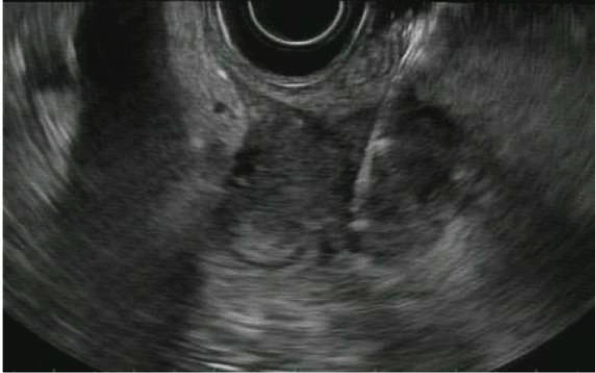Pancreaticobiliary Endoscopy
Endoscopic Ultrasound (EUS) with fine-needle aspiration; is a procedure used to collect tissue biopsies from lesions around the GI tract and is a minimally invasive technique. During this procedure, we advance a special type of endoscope with an ultrasound down the esophagus into the stomach or intestines. Now with both visual and ultrasound guidance from within the body, we are able to visualize the deepest layers of the gastrointestinal tract along with the nearby structures such as the pancreas, liver, and lymph nodes. After we visualize these targets we advance a needle from the scope channel into the lesion under ultrasound guidance and obtain the cells to be examined by the pathologist.
Endoscopic Retrograde Cholangiopancreatography (ERCP)
We perform an endoscopic retrograde cholangiopancreatography (ERCP) to alleviate obstructions found in the ducts which drain our liver, gallbladder & pancreas. During an ERCP we obtain access using the bile duct or the pancreatic duct after performing a sphincterotomy, a technique to enlarge the opening of the duct. Using a balloon device high in the branches of the duct we pull back down to remove stones, debris & sludge which is causing the obstruction. If there is a case where the duct is presenting with stricture or a narrowing of the duct due to cancer or being inflamed, we place a stent which crosses the stricture or narrowing area and allows for continued drainage. When necessary we obtain biopsies of both the bile & pancreatic ducts.
When Stones are Too Large?
When a stone in one of these ducts is too large to be removed using a balloon, we have several alternative methods for stone extraction. Such as; special baskets which engulf the stone and crush it to be removed in pieces. Another novel technique is advancing a special laser into the bile or pancreatic duct to break into smaller pieces for extraction, known as laser lithotripsy.
Other Reasons to Perform an ERCP
When a leak is present in the bile or pancreatic duct, the first exam performed is an ERCP. This leak is referring to a hole in the duct which is now leaking toxic body fluids into the abdomen. In the instances of found leaks, a stent is placed across the area of the leak, allowing it to seal and begin healing over time.
ERCP is performed in the following circumstances:
- Most commonly, Gallstones
- Ampullary Adenoma or Cancer
- Autoimmune, Acute & Chronic Pancreatitis
- Pancreatic & Metastatic Cancer



